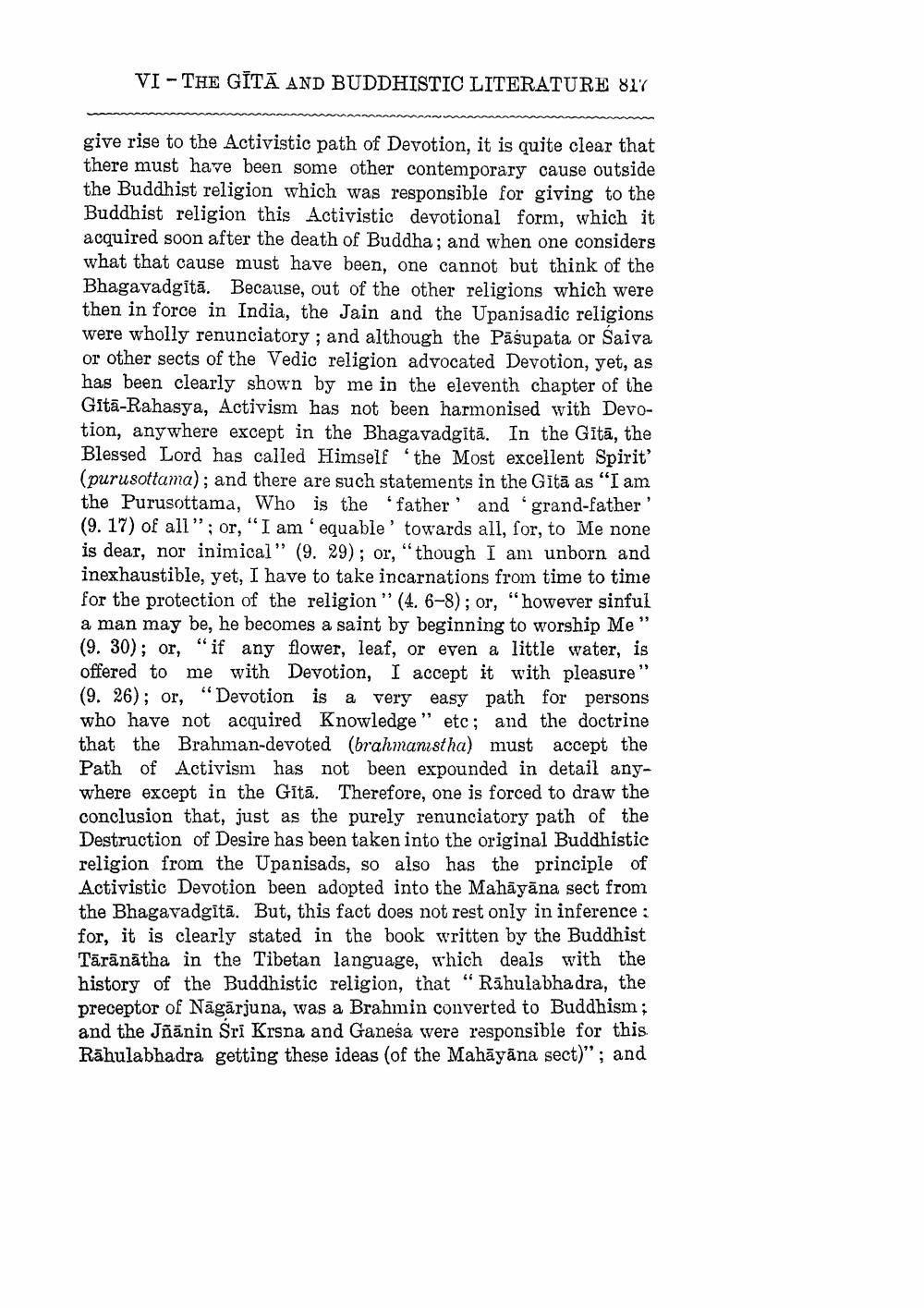________________
VI - THE GĪTĀ AND BUDDHISTIC LITERATURE 817
give rise to the Activistic path of Devotion, it is quite clear that there must have been some other contemporary cause outside the Buddhist religion which was responsible for giving to the Buddhist religion this Activistic devotional form, which it acquired soon after the death of Buddha; and when one considers what that cause must have been, one cannot but think of the Bhagavadgitā. Because, out of the other religions which were then in force in India, the Jain and the Upanisadic religions were wholly renunciatory; and although the Pāśupata or Saiva or other sects of the Vedic religion advocated Devotion, yet, as has been clearly shown by me in the eleventh chapter of the Gītā-Rahasya, Activism has not been harmonised with Devotion, anywhere except in the Bhagavadgitā. In the Gītā, the Blessed Lord has called Himself the Most excellent Spirit' (purusottama); and there are such statements in the Gitā as “I am the Purusottama, Who is the father' and 'grand-father' (9.17) of all"; or, “I am 'equable' towards all, for, to Me none is dear, nor inimical" (9. 29); or, "though I am unborn and inexhaustible, yet, I have to take incarnations from time to time for the protection of the religion” (4. 6-8); or, "however sinful a man may be, he becomes a saint by beginning to worship Me" (9. 30); or, "if any flower, leaf, or even a little water, is offered to me with Devotion, I accept it with pleasure" (9. 26); or, “Devotion is a very easy path for persons who have not acquired Knowledge" etc; and the doctrine that the Brahman-devoted (brahmanistha) must accept the Path of Activism has not been expounded in detail anywhere except in the Gītā. Therefore, one is forced to draw the conclusion that, just as the purely renunciatory path of the Destruction of Desire has been taken into the original Buddhistic religion from the Upanisads, so also has the principle of Activistic Devotion been adopted into the Mahāyāna sect from the Bhagavadgitā. But, this fact does not rest only in inference: for, it is clearly stated in the book written by the Buddhist Tārānātha in the Tibetan language, which deals with the history of the Buddhistic religion, that "Rāhulabhadra, the preceptor of Nāgārjuna, was a Brahmin converted to Buddhism; and the Jñānin Sri Krsna and Ganesa were responsible for this. Rāhulabhadra getting these ideas (of the Mahāyāna sect)"; and




